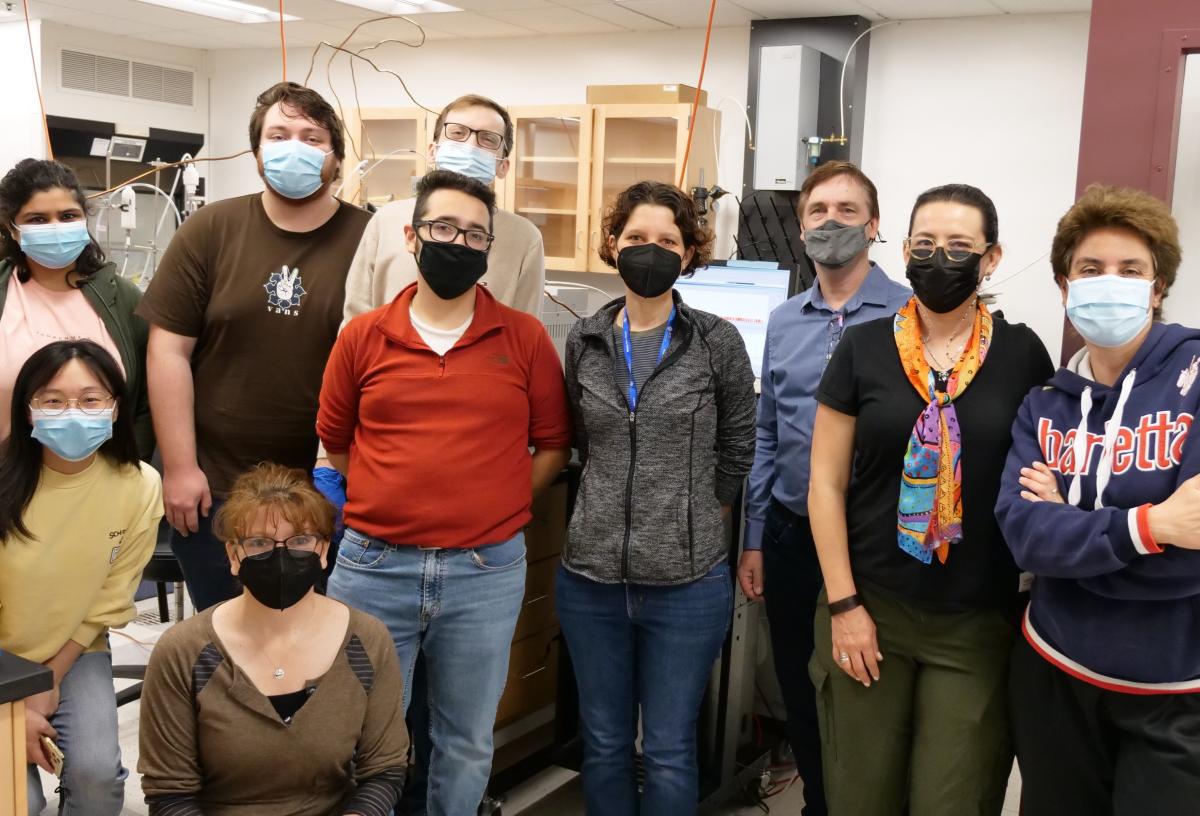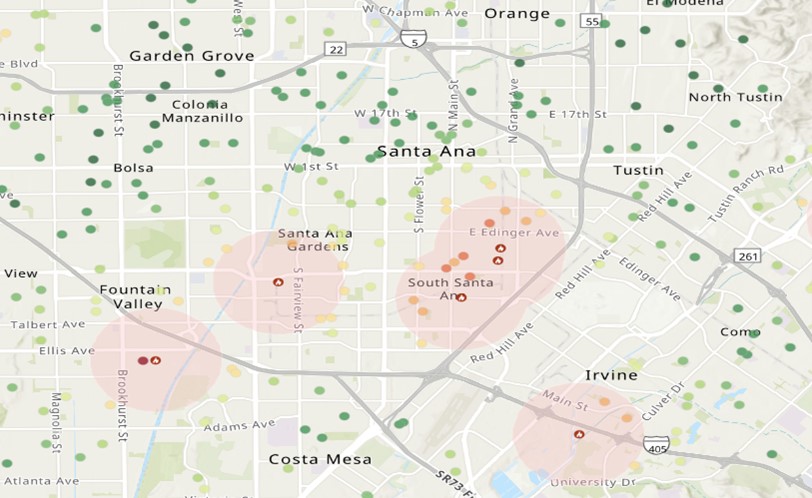Beyond the Tailpipe Research
As the project progresses, we will present descriptions of some of our experiments and data findings based on the four areas of investigation:
- Group 1: Generation of tire and brake particles; development of approaches to probe their chemical composition and that of any associated gases; oxidation of those particles and gases and identification of oxidation products
- Group 2: Toxicology, health effects, and population-level exposures (Kleinman lab in photo)
- Group 3: Field measurements in Santa Ana
- Group 4: Communities, dissemination, data management, and EJ policy formation
Group 1:
Generation of tire and brake particles; development of approaches to probe their chemical composition and that of any associated gases; oxidation of those particles and gases and identification of oxidation products
Particle Generation
On November 12, 2021, members of Group 1 did their first "truck experiment" with the goal of seeing if they could generate and capture VOCs from brakes, which they did! Professor Don Blake volunteered the use of his old truck for this test, then peeled out and drove doughnuts around an empty Lot 12-A while pressing the brakes. The research team took air samples and had some surprisingly good results.
In December 2021, after the first very rough try at investigating gases coming from Don's truck brakes, the experiment was repeated in the Rowland Hall loading dock area. Additional equipment and more team members were added with some modifications to the collection process. Between the canister measurements and PTR-MS, there were some intriguing, and as far as can be determined from literature, unique results. Read the article
Experiments soon moved from the parking lot and loading dock to laboratory conditions, where the team has successfully generated brake and tire particles and collected them for analysis and also provided them for use in testing conducted by Group 2.
March 20, 2022 news item: A toxic chemical released from 'tyres' as they wear down on roads, and which has been implicated in mass deaths of salmon in the United States, has been found in an Australian waterway for the first time.
Thermal Degradation 
In addition to particle generation and analysis, the thermal degradation sub-group (some of whom are shown here) ran a first exploratory thermal degradation study in January 2022 on the old brake pads from Don's truck. The researchers also took air samples in canisters that were analyzed for pollutants. In March 2022 a new experiment was successfully run by the thermal degradation sub-group under lab conditions using the equipment parameters determined in prior tests and maximizing the collection procedure to include everyone's measurements.
Since that time several successful experiments have been run in our laboratories to determine the thermal effects on tires, brake pads and surfaces with increasingly exact measurements, and additional tests will continue through the remainder of 2023.
Group 2:
Toxicology, health effects, and population-level exposures
Group 2 began planning their toxicology testing in October 2022 and determined the types, sizes, and amounts of the particulate matter needed for their experiments. Once sufficient samples had been obtained and provided by Group 1 in late 2022, they began their in vitro work and, based on the results, will then undertake their in vivo experiments through 2023.
Group 3:
Field measurements in Santa Ana 
Group 3 collects gas samples in regions of Santa Ana and has deployed a number of air quality monitors among the community. One priority of this research is to map heavily trafficked roads in Santa Ana at locations where exposure and health impacts are likely to be high—such as schools—to better understand the impacts of non-tailpipe emissions.
We are currently constructing a mobile laboratory for sample collection and analysis which will be deployed to key sites with heavy traffic. The data will be used to model pollution scenarios based on traffic flow, weather conditions, and other factors.
Group 4:
Communities, dissemination, data management, and Environmental Justice policy formation
This group participates in the City Council’s process of updating Santa Ana’s City Plan and advocates for enhanced commitments to establish an Office of Environmental Justice in the City of Santa Ana. Participation in this committee is an opportune way for AirUCI researchers—including interested graduate students—to participate directly in policy advocacy.
Faculty, students and post-docs characterize the cumulative environmental hazards and compounding environmental health vulnerabilities in Santa Ana.
We also host tours demonstrating the scientific process in our laboratories for MPNA members and 4th through 12th grade students within the Santa Ana Unified School District. The photo shows a student visit by ALMA Science Academy, a program formed by the MPNA at Madison Elementary to mentor students interested in STEM.

